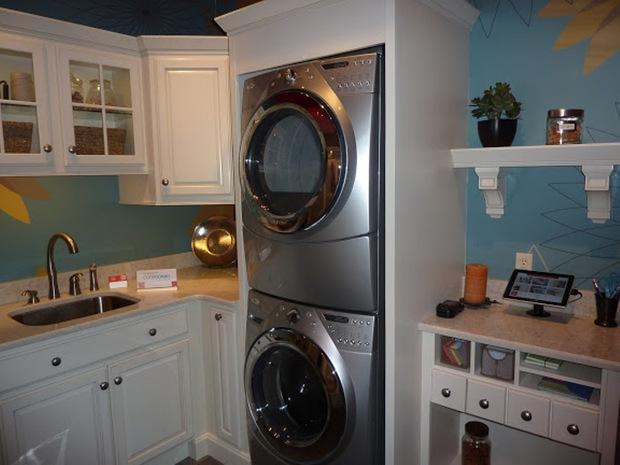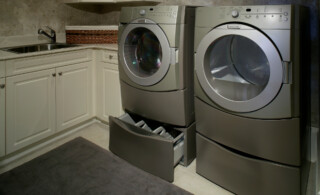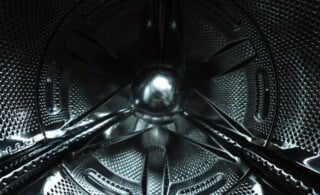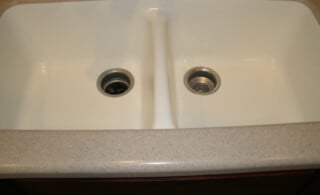
Maybe you have recently moved from the old apartment building to your first house or condo. Maybe the kids have flown the nest and you’ve found a place that’s just the right size. Or maybe you’re just thinking that it would be nice to get more space out of your laundry room. Whatever your reason, you are wondering whether a stackable washer and dryer might be the solution for your home.
A stackable washer-dryer is a good option for those looking for full-service laundry capabilities, but with limited space. Also known as a laundry center, the stackable washer-dryer is a configuration in which the dryer stands on top of the washer, rather than next to it.
Types of Stackable Washer-Dryer Units
Stackable washers and dryers come in a variety of configurations, based on a number of factors:
- Size: The size listed on a unit refers to its width. The two most common widths are 27 inches (the same as most standard, stand-alone washers and dryers) and 24 inches (which will fit more easily in most closets). The advantage of a larger machine is capacity, while the advantage of a smaller machine is, again, convenience and space savings.
- Voltage: Most stackable washer-dryer units require a 220-volt power outlet, which you may need an electrician to install. Some compact units, however, only require a regular, 110-volt outlet. Check into your electrical situation before you buy.
- Washer configuration: Washers these days come in both top-loading and front-loading configurations. Top-loading machines are less expensive and easier on your back, but front-loading machines are far more energy-efficient, using two-thirds less water. Both are available in stackable washer-dryer units.
- Gas vs. Electric: Dryers these days are powered either by gas or electricity. If your home is already set up for gas, then this might be a more efficient option, if not, it’s probably best to go with an electric dryer.
- Energy Rating: All stackable washers and dryers are rated by the Department of Energy for their efficiency. Look at the yellow sticker when shopping around. Generally, the lower the number, the more efficient the machine. More efficient units do cost more money, but will save you money on your bills down the line.
Ready to start your stackable washer & dryer?
Find ProsDisadvantages of Stackable Washer Dryer Units
Although they save space, most compact stackable washer and dryer units have fewer of the “bells and whistles” that are available on stand-alone units. Another problem that some users have discovered is that with stackable washers and dryers sold as a pair, one piece is sometimes of a better quality than the other. The washer will break down before the dryer, or vice versa. What do you do when one piece gives out completely, but the other is still good? To solve these problems, some homeowners purchase separate washers and dryers, and stack them themselves. This gives you more flexibility in choosing the features and quality that you want in both the washer and dryer.
In order to do this, however, your washer must be front-loading and have the controls on the front of the machine. If the units are full-sized, you will also need a supporting framework for the dryer, and you’ll need to make sure that you have enough vertical space to support the whole structure.
Overall, if you are looking to make the most of the space you have, a stackable washer and dryer might be the option for you.
 Washing Machines and Clothes Dryers
Washing Machines and Clothes Dryers  What to Check When Your Washer Won’t Drain
What to Check When Your Washer Won’t Drain  DIY Guide: Replacing a Washer Pump
DIY Guide: Replacing a Washer Pump  Garbage Disposal Cleaning: Show Your Garbage Disposal Who Is Boss
Garbage Disposal Cleaning: Show Your Garbage Disposal Who Is Boss 

By a “supporting frame-work for the dryer”, do you mean a “stackable kit”, or something else? I’m trying to replace one stackable washer underneath with a new one. The dryer is fine.
What is the “supporting framework” you suggested? Is it more than a “stackable kit”? I don’t want these machines falling out of my laundry closet.
I stacked a regular front-loading dryer on top of a front-loading washer in a former, smaller residence. While the salesman suggested I also buy the “supporting framework kit” for the dryer, it was basically just a thin plastic frame, and overpriced. I simply cut a placed 2 pieces of the rolls of white rubbery shelf-liners carried in all hardware stores between the two machines, and it worked for 5 years (til we sold and moved) like a charm. Cost me $5 :-).
Interested in knowing the best stackable washer and dryer are.